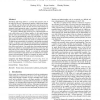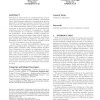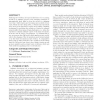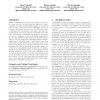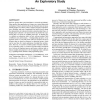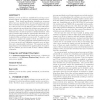ISSTA
2012
ACM
12 years 2 months ago
2012
ACM
Identifying and fixing defects is a crucial and expensive part of the software lifecycle. Measuring the quality of bug-fixing patches is a difficult task that affects both func...
SIGSOFT
2012
ACM
12 years 8 months ago
2012
ACM
The RESER workshop provides a venue in which empirical software engineering researchers can discuss the theoretical foundations and methods of replication, as well as present the ...
EMSOFT
2011
Springer
13 years 5 days ago
2011
Springer
Motivated by improvements in constraint-solving technology and by the increase of routinely available computational power, partial-program synthesis is emerging as an effective a...
MSR
2011
ACM
13 years 3 months ago
2011
ACM
The FixCache algorithm, introduced in 2007, effectively identifies files or methods which are likely to contain bugs by analyzing source control repository history. However, many ...
MSR
2011
ACM
13 years 3 months ago
2011
ACM
Studying the evolution of topics (collections of co-occurring words) in a software project is an emerging technique to automatically shed light on how the project is changing over...
MSR
2011
ACM
13 years 3 months ago
2011
ACM
Software readability is a property that influences how easily a given piece of code can be read and understood. Since readability can affect maintainability, quality, etc., prog...
ICSE
2011
IEEE-ACM
13 years 3 months ago
2011
IEEE-ACM
Software product lines gain momentum in research and industry. duct-line approaches use features as a central abstraction mechanism. Feature-oriented software development aims at ...
ICSE
2011
IEEE-ACM
13 years 3 months ago
2011
IEEE-ACM
A plethora of recent work leverages historical data to help practitioners better prioritize their software quality assurance efforts. However, the adoption of this prior work in p...
ISPW
2011
IEEE
13 years 4 months ago
2011
IEEE
Software process models are sophisticated and large specifications aimed at organizing and managing software development. Their formal specification demands an enormous effort,...
